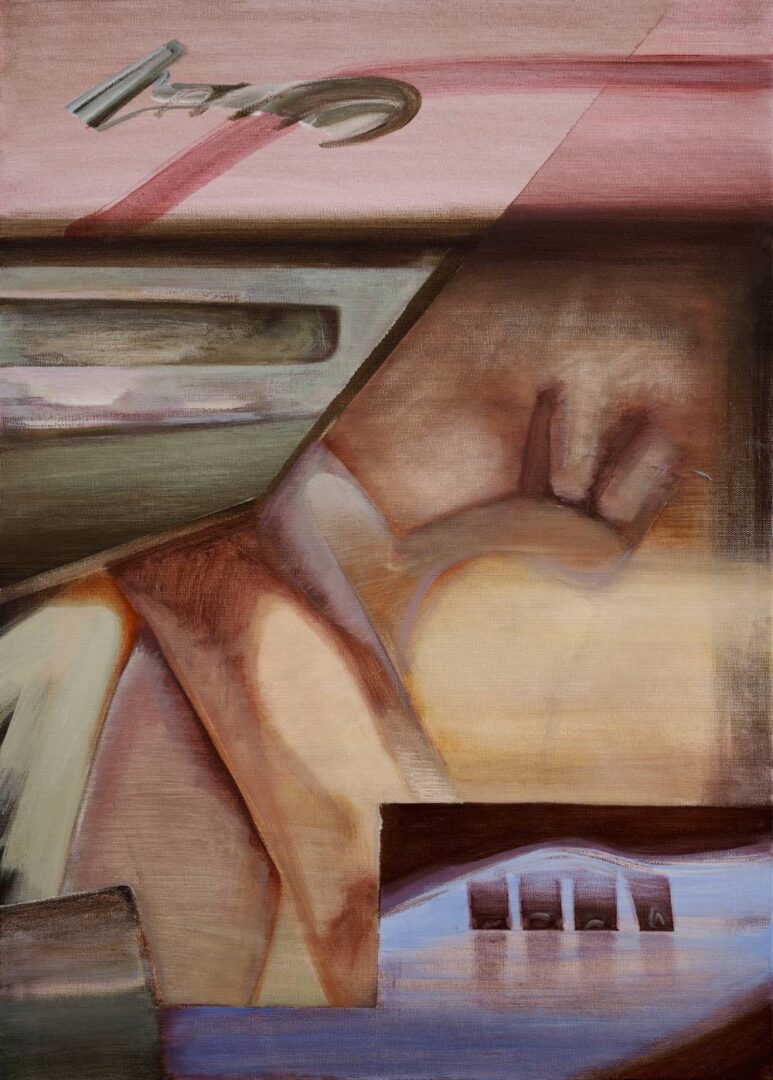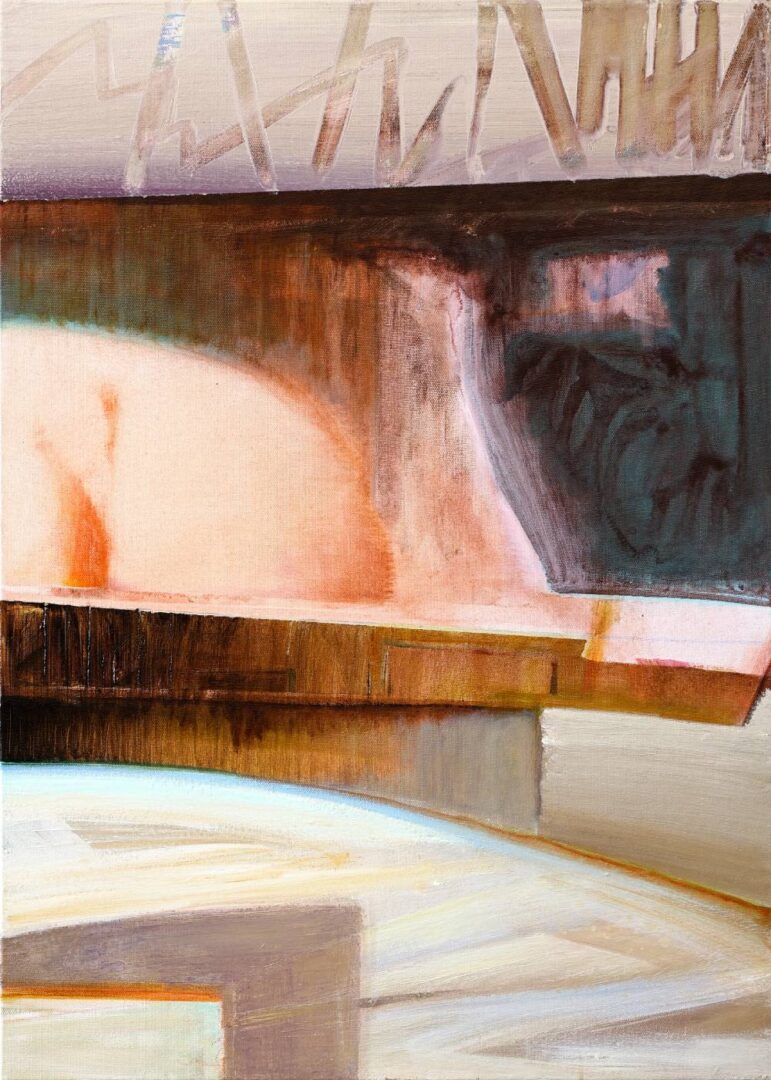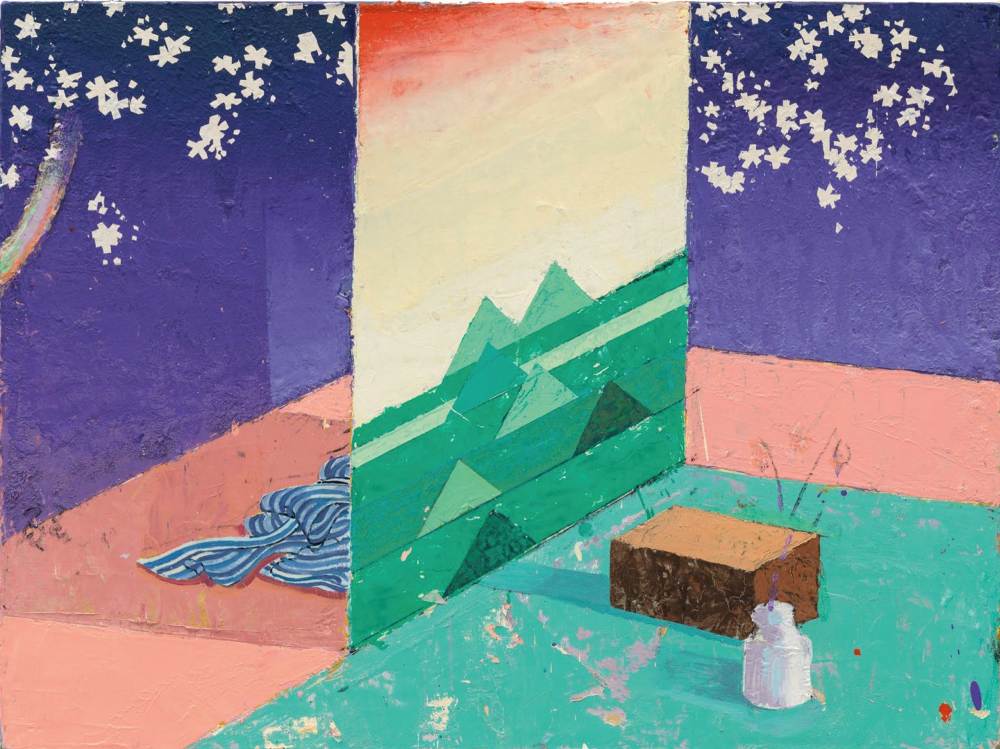Starting from the conception of a painting as a place to meet, different approaches can be observed in this international group exhibition. The show looks into the various ways that contemporary painters stage encounters, be it imaginary or with an abstract other. While some of the works guide the spectator’s imagination by delivering a figurative scene or by creating an interior with meaningful objects, others retreat into an exclusive, painterly world, where forms seem to float freely, or where there is no clear sense of perspective but merely the immediate impact of color, surface, and shape instead. The different ways the artists create and handle pictorial space is an extension of their conceptions of what a painting should be or present, and how it anticipates the presence of the other.
Interior states
Matthias Weischer(Germany, 1973, works in Leipzig) creates stage-like paintings in which the viewer feels invited to actively engage in the work. To attain this openness, the artist’s focus is on the spatial order, measurements, and scale of interiors. These parameters anticipate the viewer’s access to the pictorial space, and they define whether viewers understand the scene and experience the work as having symbolic, spiritual, or another kind of potential. Slight “mistakes” in perspective increase the viewer’s engagement with the painting.
The work of Lara de Moor (The Hague, 1969, works in Rotterdam) primarily seems to be about what hangs in the air of abandoned houses, about the atmosphere that has accumulated in the interiors over the years. On one hand, the tone is set by traces of times past, such as a light spot on the wall that betrays where a painting had hung for years. On the other hand, the painter brings in props and thereby changes the empty rooms, recharging the mood, and magnifying certain aspects of the interior.

Ambivalent figuration
Elements of landscape, architecture, and the body meld together in the small-scale paintings of Rezi van Lankveld (The Netherlands, 1973, works in Amsterdam). Forms may look familiar but are reluctant to be identified in a singular sense; the figuration is ambivalent and is meant as such. Movement is key in this artist’s conception of a painting: a figurative motif should be flexible and ready to change shape. It is for the viewer to decide which lines and shapes in the painting to follow, and to see the work as a landscape, as a body, or –more abstractly –as a state of mind.
The motifs in the work of Kiki Kolympari (Germany, 1974, works in Athens) behave like words on the tip of your tongue –almost but not fully recognizable. The ambivalence is part of the painter’s intention. She offers us a range of sensibilities caused by colors and forms at play.There is a haptic quality to the work, an immediate feeling of touch that can best be enjoyed close to the surface. A few steps further back, the focus is on the orchestration of the whole, the play between fore-and background, the compositional equilibrium, the feeling of floating or gravity, and, sometimes, a scene that reveals itself as an interior, a human figure, or an object.

Lyrical abstraction
What happens when we look at a painting and cannot immediately name what is depicted? Instead of identifying a subject matter or scene, we can observe other aspects: texture, details, how a curve bends, how two colors bond or contrast, and the overall atmosphere.
The abstract paintings of David Benforado (Greece, 1977, works in Athens) often balance between suggesting the outlines of a landscape and simply showing color, gesture, and texture. There might be a hint of spatial orientation, such as lights appearing against a dark sky. Or, the relation to nature might come through a specific color the artist chooses to evoke a certain space. Some of the works seem gentle and hospitable, while others confront the viewer with harsher aesthetics.
For Erwin Bohatsch (Austria, 1951, works in Vienna) “space” refers primarily to the pictorial space of a painting, and not to a place in the world outside, or to a figure or a story. Bohatsch has, over decades, developed a unique vocabulary of lyrical abstraction. His palette evokes a melancholic world view, where a sense of loss comes together with a receptiveness for thevisual beauty of forms. Defined parts of the canvas alternate with empty areas that leave space for the viewer’s imagination.
The works of Caitlin Lonegan (USA, 1982, works in Los Angeles) are developed through a slow process in which the artist works simultaneously on several different paintings. Her work is about the nuances in looking, and it evolves from re-thinking the gestures that are available in the history of painting, such as those of the impressionists and the abstract expressionists. Through different layers of paint, she creates an atmosphere on the pivot between subjective and objective. The artist sees her work in an active dialogue with the tradition of painting. She notes: “I don’t want to do what Monet did back in 1890. I want to do whata Monet is doing to me now.”



